- Home
- Katherine Paterson
Stories of My Life
Stories of My Life Read online
These stories are for my children,
Lin, John Jr., David, and Mary,
and their “little sister,” Mary Cecile,
also
for my grandchildren,
Katherine, Margaret, Carter, Griffin, Decker, Jordan, Liam,
plus Katie,
and as always, for John
DIAL BOOKS FOR YOUNG READERS
Published by the Penguin Group
Penguin Group (USA) LLC
375 Hudson Street, New York, New York 10014
USA/Canada/UK/Ireland/Australia/New Zealand/India/South Africa/China
penguin.com
A Penguin Random House Company
Copyright © 2014 by Minna Murra, Inc.
All photos are courtesy of the author.
Penguin supports copyright. Copyright fuels creativity, encourages diverse voices, promotes free speech, and creates a vibrant culture. Thank you for buying an authorized edition of this book and for complying with copyright laws by not reproducing, scanning, or distributing any part of it in any form without permission. You are supporting writers and allowing Penguin to continue to publish books for every reader.
Library of Congress Cataloging-in-Publication Data
Paterson, Katherine.
Stories of my life / Katherine Paterson.
pages cm
ISBN 978-1-101-62065-6
1. Paterson, Katherine. 2. Authors, American—20th century—Biography. 3. Children’s stories—Authorship. I. Title.
PS3566.A779Z46 2014 813'.54—dc23 [B]
The publisher does not have any control over and does not assume any responsibility for author or third-party websites or their content.
Version_1
Contents
Title Page
Dedication
Copyright
A Few Words from Kate DiCamillo
My Friend Katherine by Nancy Price Graff
Introduction
Three Frequently Asked Questions
Mary Elizabeth Goetchius
George Raymond Womeldorf
Over There
In Hospitals
The Courtship and Wedding
Early Days in China
At Home in Huai’an
Enemy at the Gate
Refugees
My Father the Drug Smuggler
The Last Year in China
At Home in an Alien Land
Grandmother Goetchius
Two Brass Buttons
Maud Truxton Henderson
The Teaching Life
Japan Days
Another Courtship
Motherhood
Motherhood (Less than Ideal)
Pets
Motherhood As Inspiration
Dedications and Other Miscellanea
Awards, Etc.
Final Gifts
Who Went Where When
My Family Tree
A Few Words from Kate DiCamillo
I don’t remember when Katherine first told me about Maud Henderson and Robert E. Lee and the last kiss. I only know that the story delighted me so much that I kept asking Katherine to tell it to me again.
At some point, I asked her to write the story down.
Actually, I threatened her.
I told her that if she didn’t write the story, I would do it.
I didn’t mean it. Not really. I just wanted to know more about Maud.
Happily, Maud’s story is in this book. The last kiss is in this book. General Robert E. Lee’s horse, Traveller, is in this book, and the bones of Traveller are here as well.
This is the story of a life.
It is the story of a first-grade girl who did not receive any valentines. That first grader grew up to be a writer, and when the writer’s mother asked her why she hadn’t written about that terrible day of no valentines, the writer answered her by saying, “All my books are about the day I didn’t get any valentines.”
This book is a valentine.
It is Katherine’s valentine to her parents and to her children. It is her valentine to life and to stories.
It is her valentine to us.
And even though the stories are written down, I love them so much that I might still ask for Katherine to tell them to me again.
My Friend Katherine by Nancy Price Graff
For almost fifteen years Katherine and I have had lunch together weekly. For eight of those years we have eaten at a diner midway between our Vermont homes and across the highway from the state garage. The diner is a family operation, clean, efficient, and democratic, but our loyalty has earned us the equivalent of frequent flyer status. We get priority seating. We have a designated waitress, Charlotte, who sometimes has Katherine’s water and my iced tea on the table even before we reach our booth. Our immutable order—BLTs and lemon meringue pie—arrives promptly. We can stay for one hour or two. At some point Charlotte decides Katherine has had enough and switches her to decaf. But this isn’t why I come.
I come for the conversation, which, in a word, is extraordinary. More often than not, we start talking even before we shrug out of our coats and slide into one of the green booths. Katherine plants both hands on the table, palms down, and leans forward. Her eyes sparkle with mischief. She can no more contain the story welling within her than she can stifle a sneeze.
Week after week, one of the greatest storytellers in the world has told me the story of her exceptional life. Diners no more than three feet away, deep into their meatloaf, are oblivious to the presence of the former National Ambassador for Young People’s Literature, the winner of the Astrid Lindgren Award and the Hans Christian Andersen Medal. It would never cross their minds that the gray-haired woman sitting two booths over, wearing a turtleneck and a pink sweater, might have had dinner last week with the Librarian of Congress or the empress of Japan.
Week after week, as Katherine nibbles at her sandwich, stories billow from her as if they were smoke and she were a furnace on the coldest day of the year. It seems, at times, as if she has lived a dozen lives, not just the one I know. Over the years I’ve discerned a pattern of before and afters: before she left China and after, before she left for college and after, before she met John and after, before she had children and after, before she started to write and after. At one lunch Katherine said she didn’t really care about the fame that has found her. I challenged her. “You enjoy the fame,” I said. “Look at the opportunities it has brought you that you never imagined having.” She smiled sheepishly. So there is also before and after she realized that she could make a difference.
Katherine rarely speaks of the book she is working on. Still, the air between us fills with chatter. Hands wave in the air. There are regular bursts of laughter. We talk about our lives, our families, the books we’re reading, our travel, our disappointments, politics, world events, and whether we will continue writing. For her, it never gets any easier. She has written more than thirty books in forty years, but each time she finishes a book, she worries that she will never again feel the inspiration of another story rising in her. I have heard this more than once.
But I don’t worry. Over the course of our friendship, I have seen Katherine whoop with laughter and I have seen her cry. I have seen her playful, sad, wistful, tired, thoughtful, and most often hopeful and happy, which seems to be her natural disposition. But I have never seen her speechless. Every week there are more stories. Many in this collection I’ve never heard before, and others I’ve heard more than once, but every story in the hands of a great storyteller finds new life wi
th every telling. These stories hint at how Katherine performs what she calls the “fragile magic” of spinning her stories for children and young adults, but anyone who reads enough of them will find the wellspring of the waters that have nourished this woman’s remarkable life.
INTRODUCTION
My daughter Lin was very ill when she was pregnant with her first child, and I went to try to help out. It was hard to know how to take care of her. She could keep virtually nothing in her stomach and most of the time simply lay in a dark room feeling miserable. I soon ran out of topics for conversation, until one day I remembered a story my mother had told me, so I said: “Surely I told you about the time . . .” But I hadn’t. She’d never heard the story I’d grown up knowing. I couldn’t believe I’d never told it to her, just as my mother had told it to me. And then I realized what had happened. I heard most of those stories at the kitchen sink while Mother was washing and my sister Liz and I were drying and putting away the dishes. For most of my children’s lives, we’d had a dishwasher.
I resolved then that I would write down the kitchen sink stories of my family, and write about my own life for my children and grandchildren and the several friends who thought I should write more about my childhood. But as I wrote and people began to read it, I added more and more. The thing just got out of hand and grew, not into a proper memoir, but beyond the simple collection of stories I’d first intended. Since writing a memoir has become all the rage, I found I could hardly give a talk without someone asking when I was going to write my memoirs. Well, call it ego or whatever you like, I decided if I was going to write the stories for my family and friends, I might just as well make them into a proper book with a proper editor and publisher instead of just doing them privately. I am a writer, after all, and I do love to tell stories—the bigger the audience, the better.
I’ve filled out details in the anecdotal tales about my parents with letters and brief memoirs that my parents wrote down when they were the age I am now. I’d taken a tape recorder to their house and asked them to talk their remembrances into it, but they were put off by the technology and decided instead to write them down for us five children. My father’s time in the Washington and Lee Ambulance Corps was augmented by the memoirs of a fellow driver, William Roth.
My mother’s mother had saved her letters from China, but they were less than satisfying. Much of the writing was intent on not worrying her mother when, in truth, her life in China was filled with many anxious times. After my father died, I remarked to his surviving sisters that it was a pity he had written so few letters, as I guessed his might have told more about our lives there. “What do you mean?” one of my old aunts asked. “He wrote Mama every week.”
“I don’t guess you still have those letters,” I said, not daring to hope.
She looked at me with disgust. “Well, we wouldn’t have thrown them away.” A few weeks later they came to my house in an old cardboard box—not every letter he wrote, I feel sure, but many more than I could have ever hoped for, starting with a few from his time in the army through the years 1923–1940, which were spent in China.
The longest story in the book is not exactly a family story, though the germ of it was told to me both by my parents and Maud Henderson herself. My friend and fellow writer Kate DiCamillo heard the short version and told me that if I didn’t write about Maud, she would, which drove me to research Maud’s life. To my surprised delight, I discovered that her letters from China to her half sister and a few others had been given to the library at the University of North Carolina. There were also records and letters in the historical archives of the Episcopal Church and references to Maud in the memoirs of Marian Craighill, the wife of an Episcopal bishop in China.
I am indebted to all these sources, but especially to my mother, who told me stories at the kitchen sink.
Three Frequently Asked Questions
Question #1: How did you become a writer?
When I’m asked this question, I usually ask the questioner if he would like to hear my first published work. If he looks at all interested I proceed to recite:
Pat, pat, pat.
There is the rat.
Where is the cat?
Pat, pat, pat.
This piece appeared in the Shanghai American School newspaper in the fall of 1939. Right beside it was a letter from my teacher, Miss Essie Shields, that began: “The second graders’ work is not up to our usual standards this week . . .” ensuring that my first published work would be forever linked to my first critical review.
Hardly anything has survived of my childhood writing. I can’t remember that there was very much to begin with. I was a reader, not a writer. I do have one letter that I wrote the same year as “Pat Pat Pat.” My parents went to China as Presbyterian missionaries in 1923. The war between China and Japan began in 1937, and in 1939 my mother and we five children spent the year in Shanghai, while my father went back to our hometown of Huai’an, which was under Japanese occupation. The trip was determined to be too dangerous for family travel, as it required the crossing and re-crossing of battle lines and bandit country. Even though we were never sure that mail would get through when he was “up country,” we would write to him. Once, trying to be very grown-up, I thought I’d imitate the way my mother often closed her letters, which was “Lovingly, Mary.” My older brother and sister saw my letter and hooted. Not ever having been a strong speller, I’d signed it: “Lovely, Katherine,” a misspelling I was often reminded of through the years. But somehow, despite the chaotic times, my letter reached my father and, amazing as it seems to me, he kept it. When I found it and reread it years later, I was pleased to see that although at school I was imitating my hated Dick and Jane primers, when I wrote to my father, whose love I trusted, I could write pretty well for a second grader.
The truth is that, even though I was a very early reader (which made me hate the school texts, which bore no resemblance in my mind to real books), no one thought I had the makings of a writer, including me. I couldn’t decide whether I wanted to be a missionary or a movie star when I grew up.
My writing life almost didn’t happen. During my last year at the Presbyterian School of Christian Education in Richmond, Virginia, one of my favorite professors stopped me in the hall and said she’d just been reading my exam and it made her wonder if I’d ever thought of becoming a writer. Now, I, the lifelong reader, the summa cum laude graduate in English literature, knew what great writing was, so how could Dr. Little imagine, on the basis of an essay on an exam, that I should be a writer? “No,” I said primly, I had no intention of being a writer because “I wouldn’t want to add another mediocre writer to the world.”
“Maybe,” Dr. Little said, “that’s what God is calling you to be.”
It was hard for me to imagine that God needed a lot more mediocre writers in the world, so I didn’t become a writer or a movie star, I became a missionary. It took me a long time to understand what Sara Little was really saying, and it was this: There are no guarantees of success, much less of quality. If you don’t dare to be a mediocre writer, you’ll never be a writer at all.
In the end, it was Sara Little who set me firmly on the journey. She recommended me for the scholarship at Union Seminary, where I met John Paterson, a young Presbyterian pastor from Buffalo, New York. I married him the following summer, and didn’t return to my life as a missionary. So then she suggested to the Board of Christian Education that I be asked to write a book on the Christian faith for fifth and sixth graders.
I began to write Who Am I? at about the time our first son, John Jr., was born, and it was published in 1966 after Lin had arrived and David was born. I realized that I loved to write and that I wasn’t going back to teaching with three tiny ones around, so I began to write in earnest. I needed something in those days that wasn’t, by the end of the day, eaten up, torn up, or dirtied up. I needed something to keep my mind from turning into mush.
And so I began to write in what snatches of time I could find when all three children were safely asleep and my minister husband was off visiting the sick and comforting the dying. My desk was the dining room table that had to be cleaned off before we could use it for any other purpose. That I didn’t always perform this task in time is proven by childish scribblings on pages of the first draft of The Sign of the Chrysanthemum.
I didn’t start with a novel. I didn’t know where to start. I tried poetry, essays, short stories, none of which anyone wanted to buy. A woman in the Takoma Park church knew I was trying to write. She asked if I’d like to go with her to a writing course being offered through the county adult education program. I was thrilled with the idea. Mom’s night out! We took the general writing course and then, when a course in writing for children was offered, we took that as well.
I got two valuable lessons from those courses. The first was that to be a writer you have to write. I have always been a student who does her homework, and I was embarrassed to go to a weekly class unprepared. So I was writing, sometimes in five-minute snatches of time, but writing something almost every day. Even after I no longer had the framework of the class, I knew that I needed to keep working in a disciplined fashion or I’d never finish anything. The second lesson I learned seems to contradict the first—it is that I did not again want to be a part of a writing group. I don’t like to share early drafts for several people to read and comment on. Other writers I know and admire swear by their writers’ groups, but I learned fairly early on that I am not that kind of writer. I’m a very private person. I need to do my work with no one reading over my shoulder or a group of people discussing it, even a supportive group.
Seven years elapsed between the publication of Who Am I? and the publication of The Sign of the Chrysanthemum—seven years during which I was writing regularly and trying to sell what I had written. I sold one short story to a tiny magazine that ceased publication the month after it printed my story. I also sold one poem, but the magazine that paid ten dollars for it died before the poem was ever published.

 The Great Gilly Hopkins
The Great Gilly Hopkins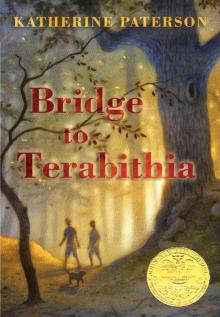 Bridge to Terabithia
Bridge to Terabithia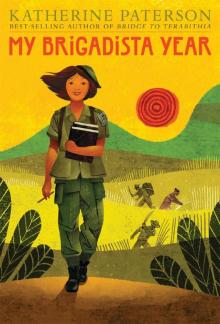 My Brigadista Year
My Brigadista Year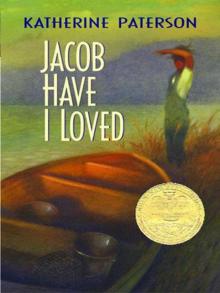 Jacob Have I Loved
Jacob Have I Loved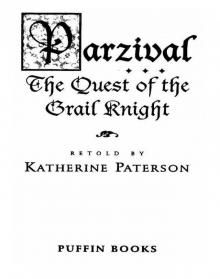 Parzival: The Quest of the Grail Knight
Parzival: The Quest of the Grail Knight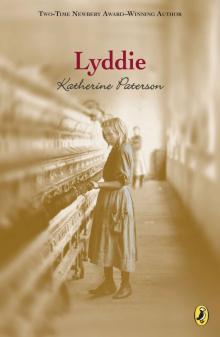 Lyddie
Lyddie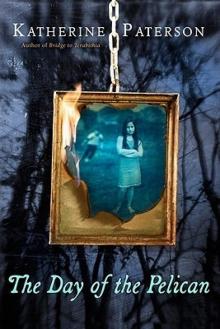 The Day of the Pelican
The Day of the Pelican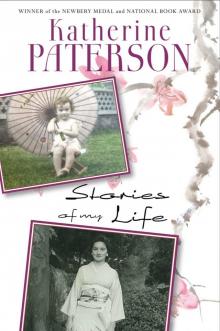 Stories of My Life
Stories of My Life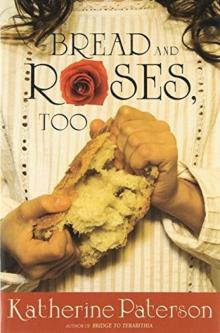 Bread and Roses, Too
Bread and Roses, Too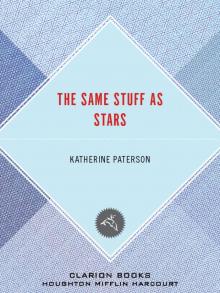 The Same Stuff as Stars
The Same Stuff as Stars